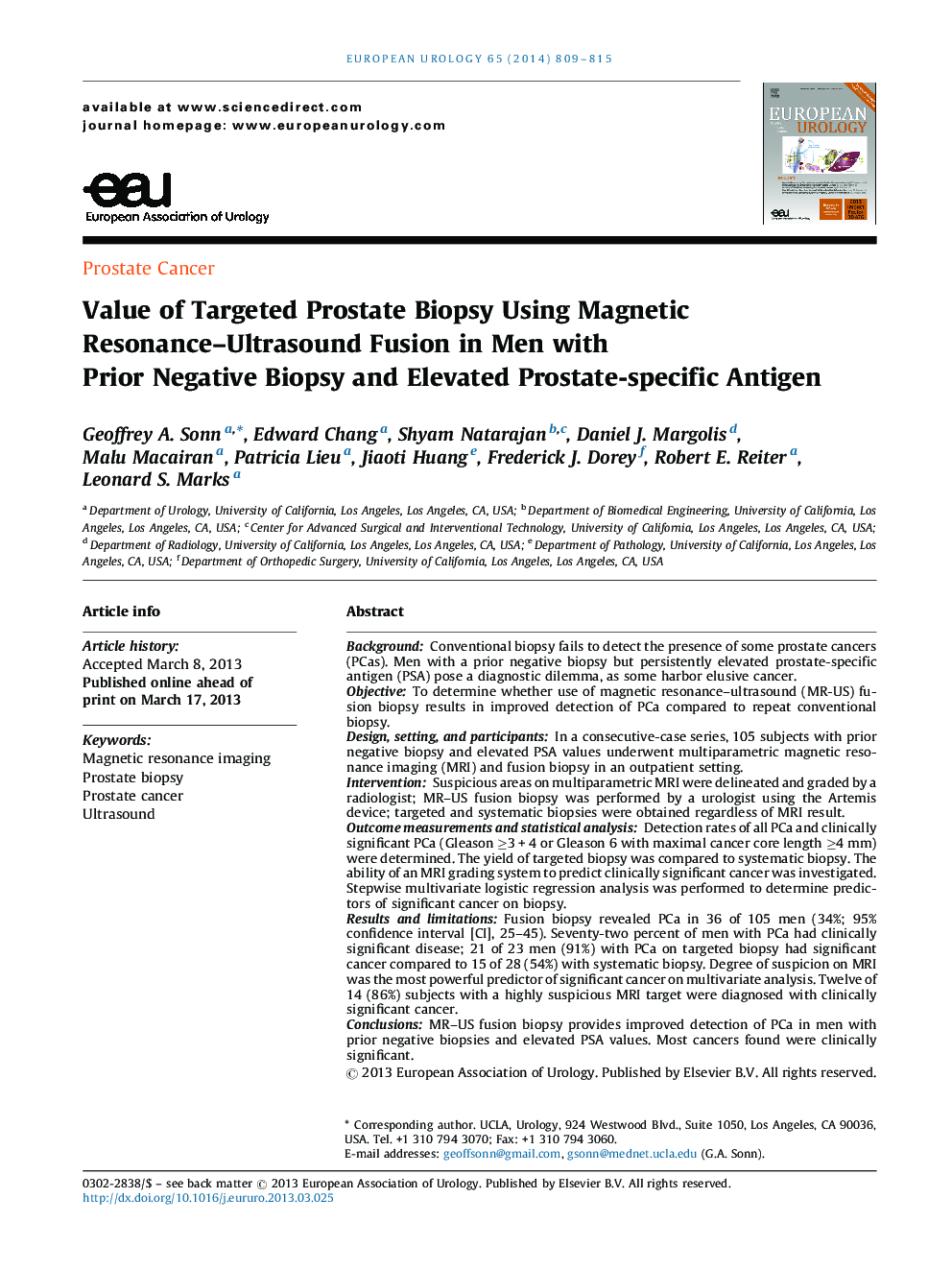| Article ID | Journal | Published Year | Pages | File Type |
|---|---|---|---|---|
| 3923659 | European Urology | 2014 | 7 Pages |
BackgroundConventional biopsy fails to detect the presence of some prostate cancers (PCas). Men with a prior negative biopsy but persistently elevated prostate-specific antigen (PSA) pose a diagnostic dilemma, as some harbor elusive cancer.ObjectiveTo determine whether use of magnetic resonance–ultrasound (MR-US) fusion biopsy results in improved detection of PCa compared to repeat conventional biopsy.Design, setting, and participantsIn a consecutive-case series, 105 subjects with prior negative biopsy and elevated PSA values underwent multiparametric magnetic resonance imaging (MRI) and fusion biopsy in an outpatient setting.InterventionSuspicious areas on multiparametric MRI were delineated and graded by a radiologist; MR–US fusion biopsy was performed by a urologist using the Artemis device; targeted and systematic biopsies were obtained regardless of MRI result.Outcome measurements and statistical analysisDetection rates of all PCa and clinically significant PCa (Gleason ≥3 + 4 or Gleason 6 with maximal cancer core length ≥4 mm) were determined. The yield of targeted biopsy was compared to systematic biopsy. The ability of an MRI grading system to predict clinically significant cancer was investigated. Stepwise multivariate logistic regression analysis was performed to determine predictors of significant cancer on biopsy.Results and limitationsFusion biopsy revealed PCa in 36 of 105 men (34%; 95% confidence interval [CI], 25–45). Seventy-two percent of men with PCa had clinically significant disease; 21 of 23 men (91%) with PCa on targeted biopsy had significant cancer compared to 15 of 28 (54%) with systematic biopsy. Degree of suspicion on MRI was the most powerful predictor of significant cancer on multivariate analysis. Twelve of 14 (86%) subjects with a highly suspicious MRI target were diagnosed with clinically significant cancer.ConclusionsMR–US fusion biopsy provides improved detection of PCa in men with prior negative biopsies and elevated PSA values. Most cancers found were clinically significant.
